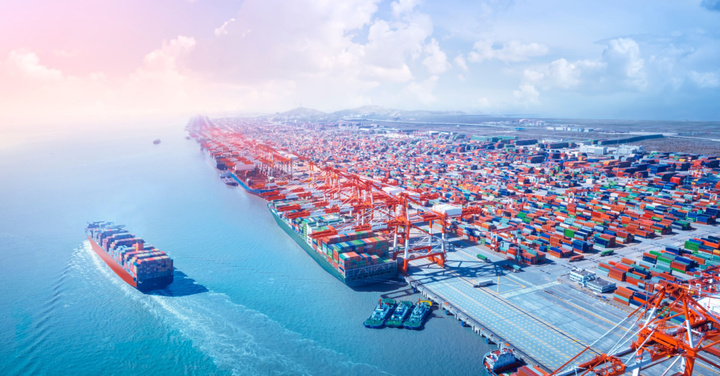
Evaluating supply chain efficiency is a complex, tedious, and absolutely necessary component of business optimization. Assessing logistics and transportation functions is critical in today’s tumultuous freight market. The right freight and drayage KPIs provide valuable insight into carrier performance and logistics efficiency and can drive improvements and cost savings across the supply chain. Read on to uncover the importance of freight KPIs and how to harness KPI data to improve supply chain processes.
What are KPIs?
Key performance indicators (KPIs) are data metrics that compare a company or department’s performance against internal goals or industry benchmarks. KPIs provide analytic value to help identify specific areas for improvement and guide more efficient, cost-effective decision-making.
Why Drayage & Freight KPIs Matter
Logistics teams must track a vast number of metrics as goods flow through each stage of the supply chain – from a purchase order, inventory, transportation, and distribution. This data is crucial for monitoring processes and identifying inefficiencies, particularly regarding container drayage and inland freight.
Drayage and ocean freight KPIs provide critical insights into an importer’s carrier network and are vital to effective transportation management. Since freight networks are composed of numerous providers and carriers working together, they are notoriously fragmented and often lack accountability when issues arise. KPIs can help pinpoint where and how problems are occurring and their financial impact so logistics teams can take quick corrective actions.
Drayage & Freight KPIs for Importers to Know
1) On-Time, In-Full Delivery Rate
On-time, in-full (OTIF) delivery is one of the most critical logistics KPIs since it is directly tied to both carrier performance and customer satisfaction. OTIF represents the percentage of shipments that were delivered according to the quantity and schedule promised when the order was placed.
OTIF = (# of shipments delivered on-time, in full) / (Total # of shipments) x 100
2) Vessel Schedule Reliability
The vessel schedule reliability KPI measures the difference between the date a carrier advertises for a vessel to arrive at a port versus the date it actually arrives. This can be expressed as a percentage of on-time arrivals or as the average deviation (in days) between the expected arrival and actual arrival for a given vessel or carrier. This KPI can help logistics teams make better-informed decisions when weighing costs against schedule reliability, particularly for time-sensitive shipments.
Vessel schedule reliability can also be presented as a port-to-port time against schedule – which measures the difference between the estimated transit time (ETT) listed at the time of booking and the actual transit time (ATT) that it takes for a vessel to travel between origin port and destination port.
3) Average Inland Transit Times
A measure of the ground freight carriers, the average inland transit time KPI measures how long it takes to transport cargo from its discharge port to its destination or final intermodal hub. This metric helps to evaluate drayage, trucking, and intermodal carrier efficiency and reliability, and guides carrier selection improvements.
4) Additional Shipping Fees and Charges
As many importers know, ocean freight costs can skyrocket when containers are not picked up and offloaded promptly. Demurrage fees apply to cargo while a loaded container is still at the port waiting to be picked up, while detention (or per diem) fees apply to the carrier’s equipment held outside the port. Monitoring detention and demurrage costs helps identify issues in the drayage process and is critical to managing transportation budgets.
5) Container Turnaround Time
This KPI captures similar information on how long containers sit at an importer’s warehouse between delivery and return. This helps identify and mitigate accruals that result from warehouse productivity or drayage partner return practices.
6) Freight Awaiting Loading or Unloading
This KPI tracks loading times at the origin and unloading times at the destination to help managers identify areas in the transportation route that experience the most frequent delays.
Move Beyond Metrics with Port X Logistics
Freight and drayage KPIs are the backbone of supply chain and transportation efficiency, but they mean nothing if they are only numbers in a report. Turning data-driven KPIs into action is essential for improving supply chain performance and delivering cost savings. The right freight partner can help importers analyze logistics KPIs and guide decision-making to enhance supply chain outcomes.
Port X Logistics has the capabilities to track cargo throughout the freight lifecycle, collect critical freight and drayage KPI data, and provide valuable analytic insights to improve logistics processes. Ready to learn more? Contact Port X Logistics today to discover their tracking, monitoring, and KPI solutions.